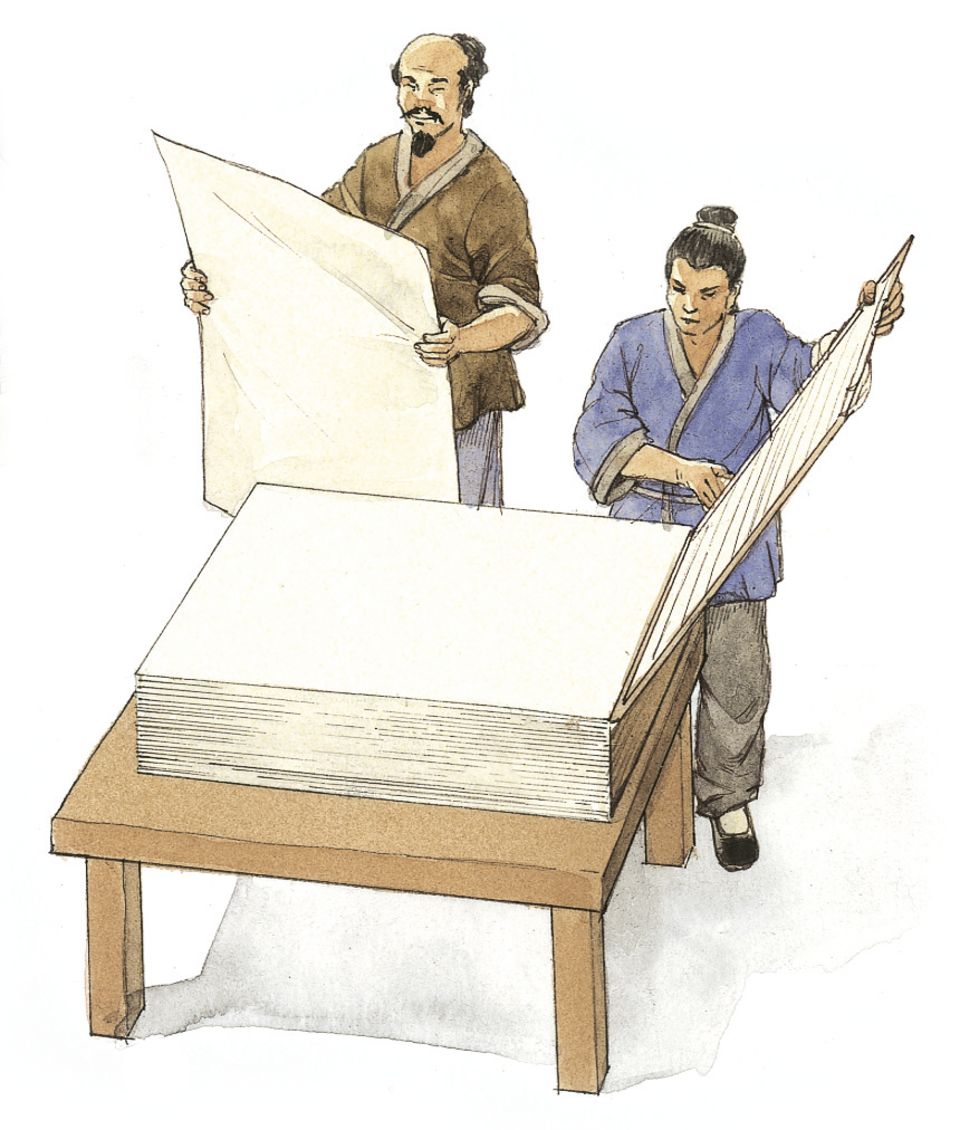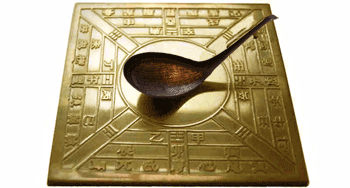Four Great Inventions
Ancient China was a country of inventions and discoveries. Among its abundant brilliant scientific and technological achievements, the 'Four Great Inventions' had made enormous contributions to the development of civilizations of the whole
1. PAPER MAKING
- Before paper making technology was invented, people carved or wrote Chinese characters on tortoise shells, animals bones, bamboo slices, wooden plates and silk
- Tortoise shells, animals bones and wooden plates are too heavy to use while silk fabrics are too expensive, so none was very practical.
- Around the early period of the Western Han Dynasty (260 BC - 25 AD), people made paper from hemp and ramie, which was rough and not suitable for writing.
- During Eastern Han Dynasty (25 - 220 AD), Cai Lun improved the technique after years of experimentation.
- He used various plant fibers such as bark, hemp, rags and torn fishing nets as raw materials to produce high quality paper.
- People call the paper that he invented as Cai Hou's paper because Cai Lun was bestowed the tittle of Longting Hou (Longting Marquis)
- Cai Hou's paper was cheap, easily available and suitable for writing on.
- Its emergence marked the beginning of paper replacing jian and bo ( one type of writing instrument before the invention of Cai Hou's paper).
- Jian is bamboo slices used to write on and bo is a general term of silk products.
- China's paper making technology spread to the Korean Peninsula, Vietnam and Japan in the late Sui (581 - 618 AD) and early Tang (618 - 907 AD) Dynasties, later to the Arabian area in the 8th century, and to Europe through the Arabians.
- The invention of paper greatly facilitated information and storage and cultural spread and exchanges, and thus had an epochal significance in promoting the development of human civilizations


2. GUN POWDER
- The formula of gun powder was first discovered by Taoist alchemists of ancient China while trying to make pills to achieve immortality.
- Later, people made black gun powder with niter, sulfur and charcoal of certain proportions on the basis of the formula.
- Books of the middle Tang Dynasty (618 - 907 AD) recorded the method of producing this kind of gun powder.
- It was first used to make firecrackers and fireworks and then in military affairs in the late Tang Dynasty.
- In the Northern Song Dynasty (960 - 1127 AD), gun powder based weapons such as rockets and cannons were widely used.

3. COMPASS
- As early as in the Warring States Period (475 - 221 BC), Chinese discovered that a magnet could indicate south and north, and on the basis of this feature, made a southward-pointing instrument that was the prototype of the compass.
- The instrument comprised a smooth magnetic spoon and a copper plate carved with directions; the handle of the spoon points south. I
- n the Song Dynasty, such prototype evolved into a southward-pointing fish and a southward-pointing needle.
- A southward-point fish was a magnetized fish-shaped thin icon slice, whose head would point southward when it floated on the surface of water.
- A southward-pointing needle was a magnetized steel needle, which was able to indicate directions when it was placed on such smooth surfaces as water, nails or a bowl or hung in the windless air.
- In the Song Dynasty, the compass was spread to Arabia and was affectionately called 'the Eye of Sailors'.
- Around 1180, the compass was introduced into Europe via Arabia. The invention of the compass pushed forward the rapid development of navigation, making it possible for Zheng He to make his seven voyages across seas to Southeast Asia and around the Indian Ocean in the early Ming Dynasty (1368 - 1644 AD), Christopher Columbus to discover the New World, and Ferdinand Magellan to sail around the world and facilitated the startup of European colonies and the establishment of world markets.


4. MOVABLE-TYPE PRINTING
- Before printing techniques was introduced, a scholar had to copy characters one by one if he wanted get a new book.
- In the Sui and Tang Dynasties, block technology was invented which improved the speed of printing.
- In block technology, Chinese characters were engraved on a wooden plate and coated with Chinese ink and the covered with paper to print.
- Block technology sped up the printing of books, but was still impractical because engraving blocks was time-consuming, such blocks could not be easily preserved and misplaced would not be easily corrected.
- During the Northern Song Dynasty, Bi Sheng finally invented movable-type printing.
- He engraved the characters could be repeatedly used for the type setting and printing of different printed sheets.
- This method was both economical and time saving, ushering in a new age of printing.
- In the development afterwards, clay used to make movable types were replaced with tin, wood, copper, lead and so on.
- Mankind had been using Bi Sheng's movable-type print until the emergence of the electronic typeset system in the 20th century
- China's movable-type printing first spread eastward into Korean and Japan and then westward into Persia and Egypt and at last across the world.
- The invention of printing greatly sped up the development of exchanges between cultures of all the countries throughout the world.



No comments:
Post a Comment